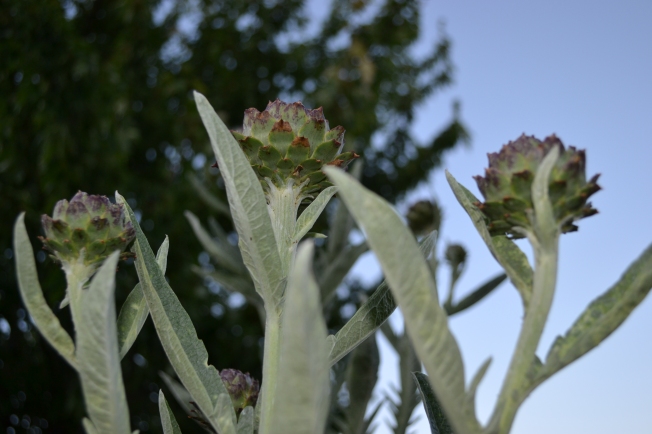So yes, I have finally given in, I began reading Animal, Vegetable, Miracle: A Year of Food Life, by Barbara Kingsolver. I was skeptical, as I am about any sort of “mainstream”ish propaganda/media. But I have to stay, this book is truly amazing. The book was written primarily by Barbara herself, with educational inserts by her husband, and short stories and recipes by her oldest daughter (her youngest daughter was too young to sign copyright/publishing papers). This book incorporates the humor associated with family life as well as her own funny comparisons and anecdotes, but also really delves deeply into vegetables as their own beings and farm education.
AVM is similar to Plenty, in the many of the chapters are broken up by month or time of year, but differs in the that family has a farm and garden, and lives in a very agricultural part of the country. They also created a type of “rule” as a family that each can have one nonlocal exception. Naturally, the choices were pretty obvious: coffee for hubby, spices for mamma, dried fruit for the oldest daughter, and hot chocolate for the youngest.
I am only half way through, but this book has covered many topics and has really taught me some things I had no idea about; not statistics like 75% of Americans are blah blah, but really important facts and bits of knowledge. Here is a random list of fun things I have learned… I will add more once I finish.
- “Milk is about 85% water, the rest is protein, minerals, butterfat, vitamins, and sugars (lactose)-which are dissolved in water. When the hold caboodle is made more acidic, the protein solids coagulate into a jellylike curd. When gently heated, this gel release the liquid whey (lactose and water). Traditionally the milk is curdled by means of specific bacteria that eat- guess what?- lactose. These selective bugs munch through the milk turning the lactose into harmless lactic acid, which causes the the curdling. The sugars that still remain are dissolved in the whey. As this liquid separates and is drained off from the curd, lactose goes with it. Heating, pressing, and aging the curd will get rid of still more whey, making it harder and generally sharper flavored. As a rule the harder the cheese the lower the lactose. (139)” Kingsolver continues to explain that by making cheese at home, the amount of lactose can be monitored, therefore allowing Lactose Intolerant individuals to actually eat cheese! Many individuals react to store bought cheese because of the quickness in production and the lactose that is carelessly left in the cheese.
- Slow Food International has created a program/catalog called the Ark of Taste. The Ark of Taste is basically a catalog of all “heirloom” food and animals at risk of going extinct. So in order to keep them in our beautiful world and food chain, what does Slow Food suggest? Eat them. The program encourages people to grow and raise these animals and plants in their own gardens and farms to keep them in existence, and also to keep them in the food chain. Brilliant.
- Morels, the spongy looking mushrooms, have a toxin in them to kill red blood cells for those who eat them raw. She suggests soaking them in salt water and then cooking thoroughly, this will eliminate the toxin.
- Take the time to look through seed catalogs. She found Russian tomatoes that are ready and ripe by June without a green house!
- Place newspaper in rows of garden and cover with leaves. The newspapers ink is nontoxic and the paper is easily composted. This helps keep weeds down and finds another use for those depressing papers.
There are at least 5 other copies of this book available at the Eugene Public Library.
I recently watched an eye opening and hope filled film on farming and agriculture as well, titled, The Real Dirt on Farmer John (2005). This movie had me laughing, crying, huffing, and yearning. In the first scene, the camera views out over a vacant field, a man speaks, beginning his story, the camera pans to a tractor, and on top of the tractor sits Farmer John… in a leopard print leotard and a pink feather boa. “I know I am going to like this movie.” He tells of his families farm, of his adolescence growing up in the summer of love, of his failure as a farmer, as his failure at life, and of his rebirth and regaining of his beloved farm. Without giving too much away, this story is definitely one of growth, not only as an individual but as a society. As a society, we are far behind what Farmer John has done, but we are shifting. Farmer John’s organic farm, Angelic Organics, is most definitely a labor of love. CSA holders put money, time, and hard work into buying land, building barns, and cooperating to create a farm they can trust and be a part of. This is a horrid story about our current food system, yet a beautiful story of community, health, and the grand possibilities the future holds.
I recommend these both to any who would like to feel enlightened about farming and eating locally! Happy Summer!





